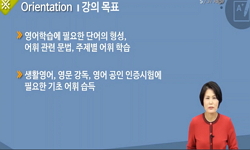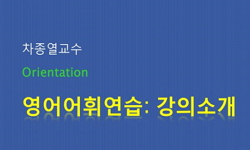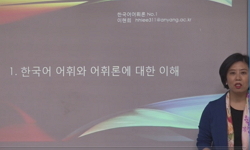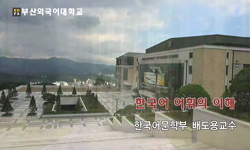The purpose of this paper is to examine the bibliographical details and Korean linguistic characteristics of 『 Bongsugungangjeolmok』, a Korean manuscript material in Jeju in the late 19th century. It can be said that the material value is high in ...
http://chineseinput.net/에서 pinyin(병음)방식으로 중국어를 변환할 수 있습니다.
변환된 중국어를 복사하여 사용하시면 됩니다.
- 中文 을 입력하시려면 zhongwen을 입력하시고 space를누르시면됩니다.
- 北京 을 입력하시려면 beijing을 입력하시고 space를 누르시면 됩니다.

19세기 후반 제주 지역 한글문헌 『봉슈군강절목』 고찰 = Study of Korean Linguistic in Jeju in the Late 19th Century 『Bongsugungangjeolmok』
한글로보기https://www.riss.kr/link?id=A108686486
-
저자
김수애 (제주대학교)
- 발행기관
- 학술지명
- 권호사항
-
발행연도
2023
-
작성언어
Korean
-
주제어
19세기 ; 병서류 ; 봉슈군강졀목 ; 제주 방언 ; 아래아(·) ; 어휘 ; 19th century ; Bongshugungangjemok ; Jeju dialect ; Military strategy books ; Alaea(·) ; Vocabulary
-
등재정보
KCI등재후보
-
자료형태
학술저널
-
수록면
27-52(26쪽)
- DOI식별코드
- 제공처
-
0
상세조회 -
0
다운로드
부가정보
다국어 초록 (Multilingual Abstract)
The purpose of this paper is to examine the bibliographical details and Korean linguistic characteristics of 『 Bongsugungangjeolmok』, a Korean manuscript material in Jeju in the late 19th century. It can be said that the material value is high in that it is possible to examine at least a part of the language of Jeju in the mid- and late 19th century in the reality that data reflecting the appearance of the old language of Jeju are rare. To this end, the bibliography of 『 Bongsugungangjeolmok』 was reviewed, and the contents were read and presented. And, focusing on this reading text, I looked at the peculiarities of notation, phoneme, grammar, and vocabulary. As a result, it was estimated that this material was written in the middle of the 19th century.
Among the characteristics of notation and phonology, saddle stitching is prominent among the stems of some nouns, and mostly stem endings appear in the case of nasal consonants, such as ‘ㄴ and ㅁ’. Among the changes of ‘·’, there is a characteristic that · appears as ‘·’ at the beginning. Among them, a form like ‘ᄀ·Eulsam-’ is a form that does not appear well in other materials. In terms of palatalization, it was found that palatalization was clearly performed from the medieval Korean period to the modern Korean period. However, ‘Shangjik, Juya, Sujingae, and Jeonjeo’ occurred inside lexical morphemes, and ‘Guji’ was a native language and occurred at the lexical morpheme boundary. In this way, it was confirmed that palatalization was already completed in the middle and late 19th century, and overcorrection of palatalization did not occur in literature published in the region through consideration of the phenomenon of palatalization. As for the grammatical feature, in the case of open syllable stems, there is a characteristic that the object particle 'eul' appears in combination, showing a similar appearance to other materials in the 19th century.
『 Bongsugungangjeolmok』 can be seen as a material from the 19th century Jeju region, but Jeju dialect characteristics are not clearly revealed, which can be seen as a strong official document.
Through this, it can be assumed that even in Jeju, where the influence of regional languages was strong, the oral language used in government offices was under the influence of the central language.
국문 초록 (Abstract)
이 논문은 19세기 후반 제주 지역 한글 필사본 자료인 『 봉슈군강졀목』의 서지 사항과 국어학적 특징을 살펴보는 데 목적이 있다. 제주 지역의 옛 언어의 모습을 반영한 자료가 드문 현실...
이 논문은 19세기 후반 제주 지역 한글 필사본 자료인 『 봉슈군강졀목』의 서지 사항과 국어학적 특징을 살펴보는 데 목적이 있다. 제주 지역의 옛 언어의 모습을 반영한 자료가 드문 현실에서 19세기 후기의 제주의 언어 모습을 일부라도 살펴볼 수 있다는 점에서 자료적 가치가 높다고 할 수 있다. 이를 위해, 『 봉슈군강졀목』의 서지 사항을 살펴보고, 해당 내용을 판독하여 제시하였다. 그리고 이 판독문을 중심으로 표기, 음운, 문법, 어휘의 특이성 등을 살폈다. 그 결과 이 자료는 19세기 중반에 작성된 것으로 추정하였다.
표기나 음운상의 특징 가운데 일부 명사 어간 가운데 중철 양상이 두드러지는데 대체로 어간 말음이 ‘ㄴ,ㅁ’과 같이 비음의 경우에 나타났다. ‘ㆍ’의 변화 가운데는 ㆍ가 어두에서 ‘ㆍ’로 대체로 나타났다는 특징이 있다. 이 가운데 ‘ᄀᆞ을삼-’와 같은 형태는 여느 자료에서 잘 나타나지 않는 모습이다. 문법적 특징으로는 개음절 어간의 경우에 목적격 조사 ‘을’이 결합되어 나타난다는 특징이 있어, 19세기 여느 자료에서 보이는 특징과 유사한 모습을 보였다. 전체적으로 19세기 제주 지역 자료로 볼 수 있지만 제주 방언적 특징은 명확히 드러나지 않았는데, 이는 공문서적인 성격이 강했기 때문으로 볼 수 있다.
동일학술지(권/호) 다른 논문
-
- 제주대학교 인문과학연구소
- 서성진
- 2023
- KCI등재후보
-
- 제주대학교 인문과학연구소
- 김민옥
- 2023
- KCI등재후보
-
- 제주대학교 인문과학연구소
- 이영환
- 2023
- KCI등재후보
-
- 제주대학교 인문과학연구소
- 이민호
- 2023
- KCI등재후보




 KCI
KCI eArticle
eArticle






